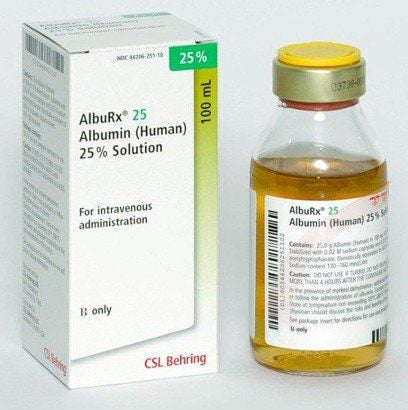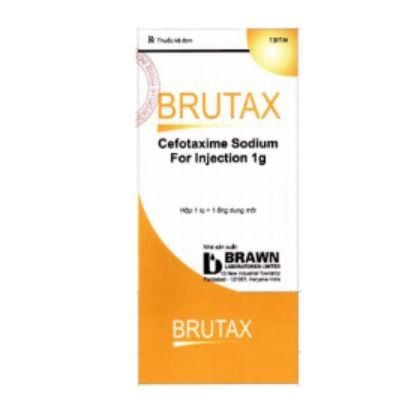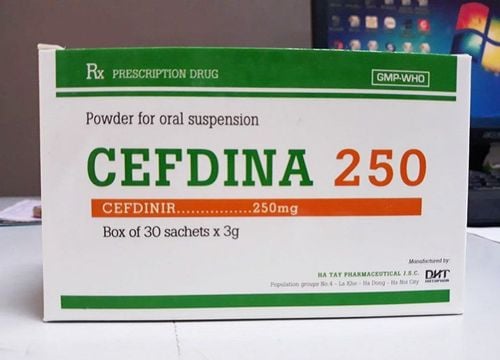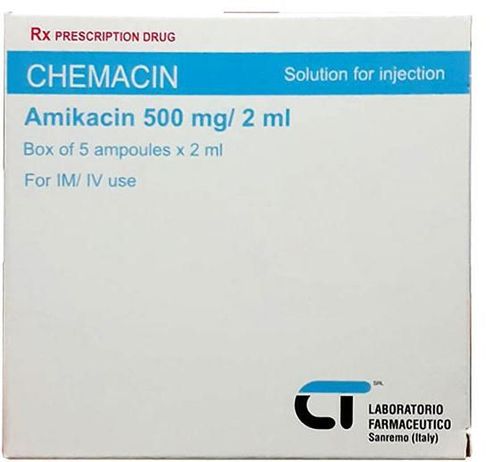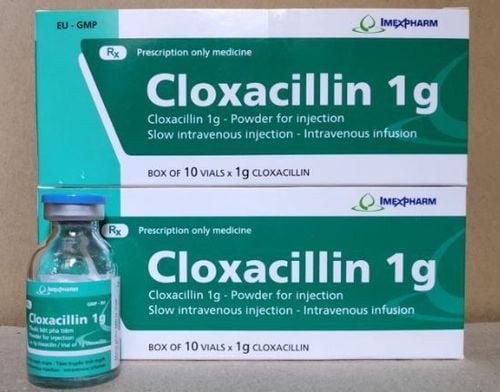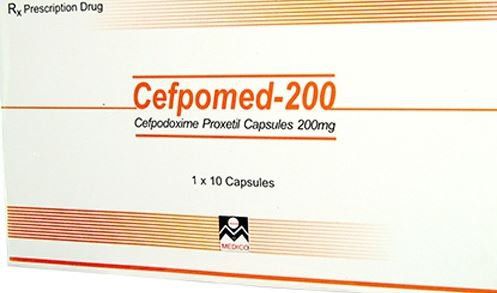This is an automatically translated article.
Foximstad 1g is a 3rd generation Cephalosporin antibiotic with broad antibacterial activity, the main ingredient in the drug is Cefotaxime, the content of 1g. The drug is used in the treatment of bacterial infections such as meningitis, bacteremia, endocarditis... and prevention of post-operative infections. To know more about Foximstad 1g drug information, please read the article below.1. What is Foximstad 1g?
Foximstad 1g is a broad-spectrum antibiotic, belonging to the 3rd generation Cephalosporin group, the main ingredient is Cefotaxime (Cefotaxim sodium), content of 1g/vial, powder for injection.The drug has a bactericidal effect by inhibiting the synthesis of bacterial cell membranes. Cefotaxime is more stable to most Gram-negative β-lactamases than first- and second-generation cephalosporins, but is less active against Gram-positive bacteria than first-generation cephalosporins.
After injection, the drug is absorbed very quickly, about 40% of the drug is bound to plasma proteins, widely distributed in tissues and body fluids. The drug penetrates into the cerebrospinal fluid, crosses the placenta and is excreted in breast milk, and is also found in the bile and feces.
The half-life of Cefotaxime is about 1 hour and the active metabolite Desacetyl cefotaxime is about 1.5 hours longer. Approximately 40 - 60% of unchanged drug is eliminated by the kidneys within 24 hours. Hemodialysis can reduce the drug concentration in the blood plasma.
2. What are the effects of Foximstad 1g?
Foximstad 1g drug is used in the treatment of infections caused by bacteria sensitive to Cefotaxime such as:
Lower respiratory tract infections, including pneumonia. Blood, skin, soft tissue infections. Endocarditis, meningitis, typhoid. Severe intra-abdominal infections including peritonitis, abdominal abscess. Gynecological and obstetric infections including gonorrhea. Foximstad 1g is also used in the prevention of infections after surgery such as laparoscopic surgery, cesarean section, gastrointestinal surgery.
3. Dosage and how to use Foximstad 1g
How to use:
The drug is prepared in powder form for injection. After being reconstituted, Cefotaxime is used for deep intramuscular injection, by slow intravenous injection over 3-5 minutes or intravenous infusion within 20-60 minutes. Dilute 1g of Cefotaxime in 3ml of distilled water to make a solution for deep intramuscular injection. Intravenous administration: 1g of Cefotaxime should be dissolved in 10ml of distilled water. In indications for intravenous infusion, it is necessary to mix 1g of Cefotaxime in 50-100ml of infusion solutions such as Sodium chloride 0.9%, Dextrose 5%. Cefotaxime solution after reconstitution can still be used within 7 days in case the solution is properly stored in the refrigerator. Dosage should be calculated based on the susceptibility of the causative organism, the specific condition of the patient, and the classification of the severity of the infection. The drug is used according to the instructions prescribed by the doctor or you can refer to the manufacturer's recommended dose as follows:
Dosage for treatment in adults:
Uncomplicated infections such as pneumonia , skin infections intravenous or deep intramuscular injection of 1g Cefotaxime every 12 hours, 1-2 times / day. Moderate to severe infections: Intramuscularly or intravenously 1-2g every 8 hours. Serious life-threatening infections: 2g IV every 4 hours. Sepsis: Intravenous dose of 2g Cefotaxime every 6-8 hours. Meningitis: Intravenous dose of 2g Cefotaxime every 6 hours, treatment time from 7-21 days. Treatment of gonorrhea: 1g intramuscular injection of Cefotaxime. For patients who are children and infants:
Children 0-7 days old: Intravenously at a dose of 50mg/kg every 12 hours. Children 1 to 4 weeks of age: 50mg/kg IV every 8 hours. Infants and children weighing <50 kg: Intramuscular or intravenous at a dose of 50 - 180 mg/kg/day every 4-6 hours. Infants and children weighing >50kg: Dosage calculated according to the calculation for adults, not to exceed 12g/day. For patients with severe renal impairment:
Use the initial loading dose, then reduce the dose by half, keeping the same number of times a day. Maximum dose is 2g/day. Dosage for prophylaxis:
Prophylactic dose in surgery: 1g intravenously 30 to 90 minutes before surgery. Prophylactic dose for patients with caesarean section: 1g intravenously immediately after clamping the placenta, then 1g intramuscularly or intravenously after 6 and 12 hours. Handling in case of oversea:
In this case, there are signs of poisoning, dangerous manifestations, you need to stop the drug immediately, immediately go to the nearest medical facility for treatment. Severe cases may require dialysis or peritoneal dialysis to manage.
4. Contraindications of the drug Foximstad 1g
Do not use the drug in cases where the patient is sensitive to Cefotaxime or other antibiotics of the Cephalosporin group.
5. Side effects when using Foximstad 1g
Unexpected side effects during the use of Foximstad may include:
Common reactions such as: Painful swelling at the injection site, venous congestion, digestive disorders. Uncommon reactions: eosinophilia or leukopenia. Rarely, severe reactions such as: anaphylaxis, hypersensitivity reactions. If you experience this situation, you need to stop taking the drug immediately, notify your doctor promptly for treatment. Abnormalities such as: thrombocytopenia/granulocytosis, hemolytic anemia, Clostridium difficile pseudomembranous colitis, increased bilirubin and hepatocyte enzymes.
6. Notes when using Foximstad 1g
Inform your doctor about your medical history, current medications, history of allergic reactions. Do not use Foximstad 1g if the patient has a history of hypersensitivity reactions to cephalosporin antibiotics, penicillins and needs to reduce the dose if you are suffering from renal failure. If you are using a strong diuretic, you should tell your doctor to consider the use of Foximstad 1g. The drug crosses the placenta, the safety of the drug for pregnant women has not been established, so it is necessary to weigh the benefits and risks when used for this population. The drug is excreted in breast milk in low concentrations, so caution should be exercised when Cefotaxime is administered to a nursing woman. With high doses, the drug can cause a state of unconsciousness, so it should be considered for use in subjects who are driving and operating machinery. Drug interactions: If you are taking the following drug groups, you should inform your doctor: Aminoglycosides, Probenecid, strong diuretics because they directly affect the effectiveness of using Foximstad. The solution for dilution of Cefotaxime should not use sodium bicarbonate. The basic information about the drug Foximstad 1g in the above article is for reference only. Because this is a prescription drug, patients should not use it on their own, but need to contact a specialist directly to get an appropriate prescription to ensure safety for health.




